Last Chance to Catch NYC's Holiday Notalgia Train
We met the voices of the NYC subway on our nostalgia ride this weekend!


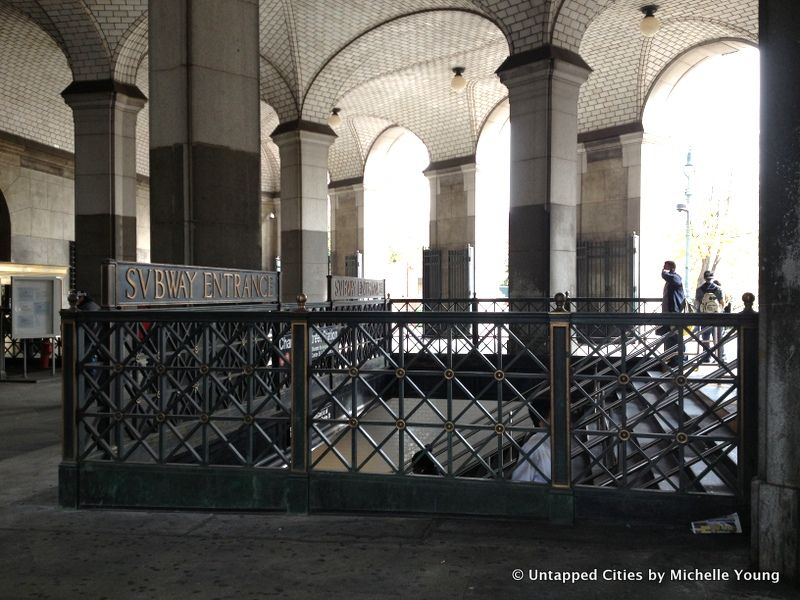
While the majority of New York City’s subway entrances have the same mundane look, there are others that still have details from an earlier era. Some entrances contain flourishes from the buildings in which they are situated, others stand alone. Today, we’ve rounded up some unique subway entrances in New York City.

This entrance part of 195 Broadway, the prior headquarters of American Telephone and Telegraph and Western Union. The building has the claim to fame of being on the receiving end of the first transatlantic phone call. It’s now home to Thompson Reuters and other tenants. Architect William W. Bosworth, who also designed Kykuit, the Gilded Age Rockefeller estate, designed this portion of the building on the Fulton Street side. The station itself, which includes this entrance, is a registered New York City landmark.
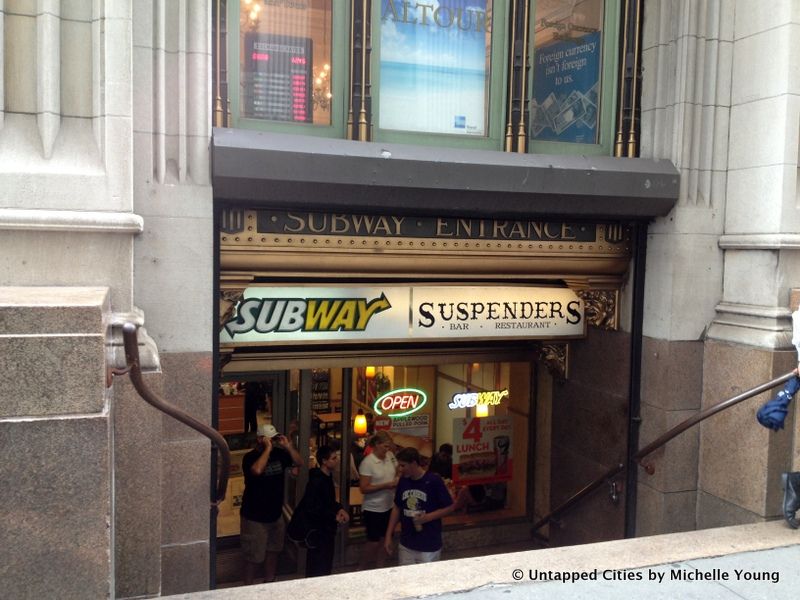
The richly Gothic-decorated interior of the Trinity Building at 111 Broadway is also present on the exterior, including this fancy original subway entrance. Appropriately (or inappropriately) enough, it also now houses a Subway fast food joint.
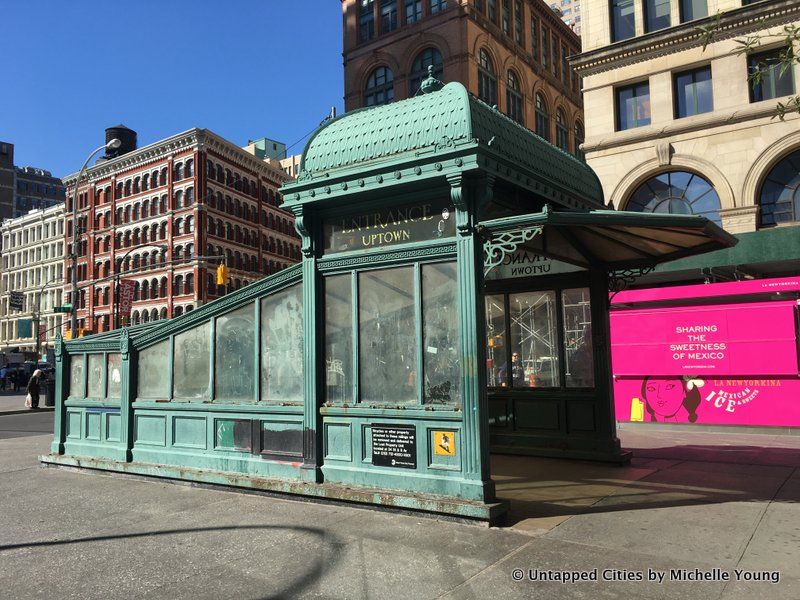
This entrance is actually a reproduction of an IRT subway entrance that was installed in the 1986 renovation. Inside there is also a public bathroom converted into a newsstand.
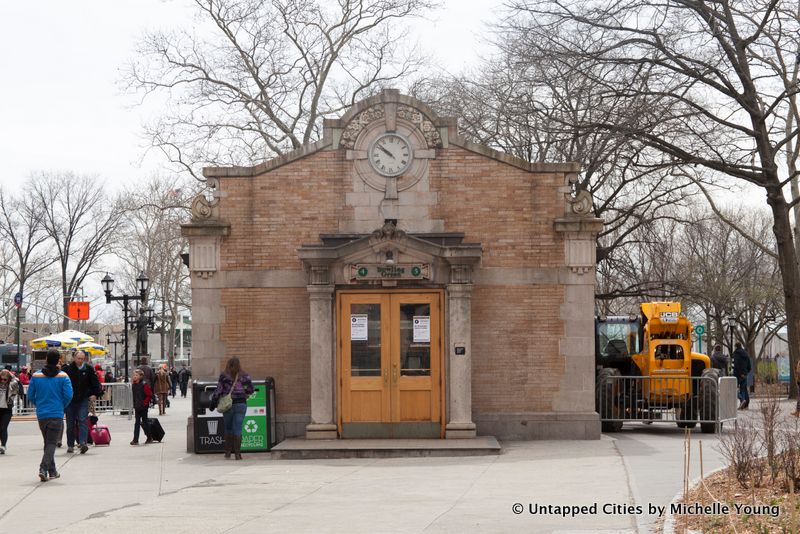
Bowling Green has one of the original fare control stations from the original IRT system. The building, now known as the “headhouse,” dates to 1905 and provides access to the island platform.
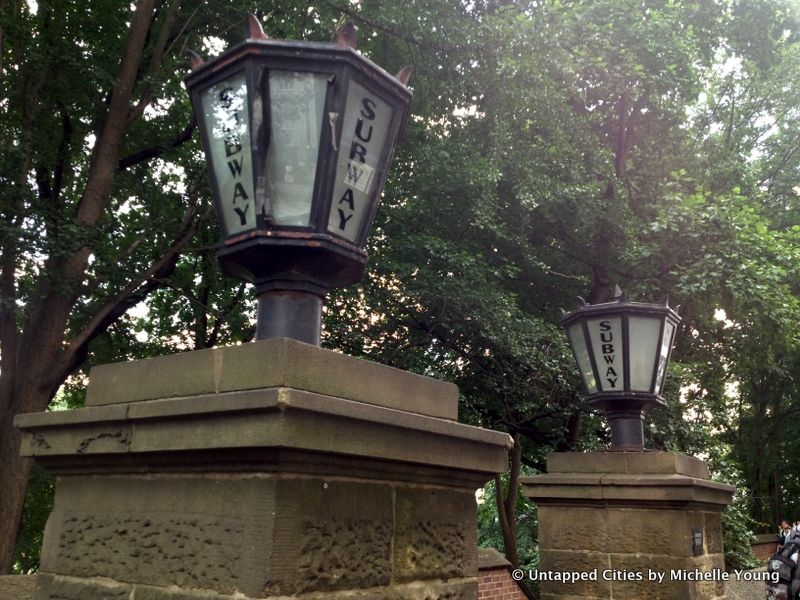
Across from The Plaza Hotel along Central Park South, you’ll catch these lanterns with the word SUBWAY on the panels.
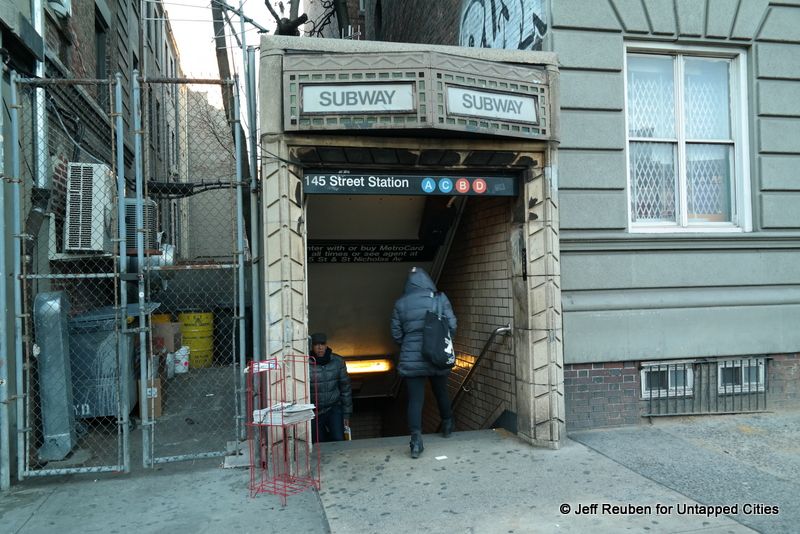
The Art Deco entrance at 181st leads to a subway station in Washington Heights that’s one of the deepest in the system. At the 145th Street station, there is a similar Art Deco-inspired entrance along the original IND line at 147th and St. Nicholas Avenue:
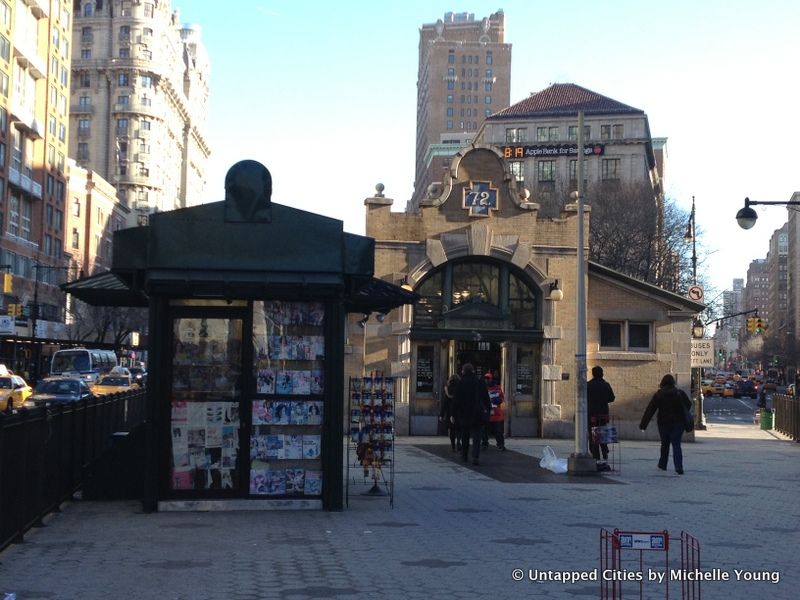
We previously highlighted this entrance because it had a newsstand curiously in the same shape as the subway entrance. It’s also one of the original 28 stations designed by architects George Heins and Christopher LaFarge for the NYC subway system. Other stations that still have their original fare control house like this are at Atlantic Avenue (next to the Williamsburgh Savings Bank) and Bowling Green.
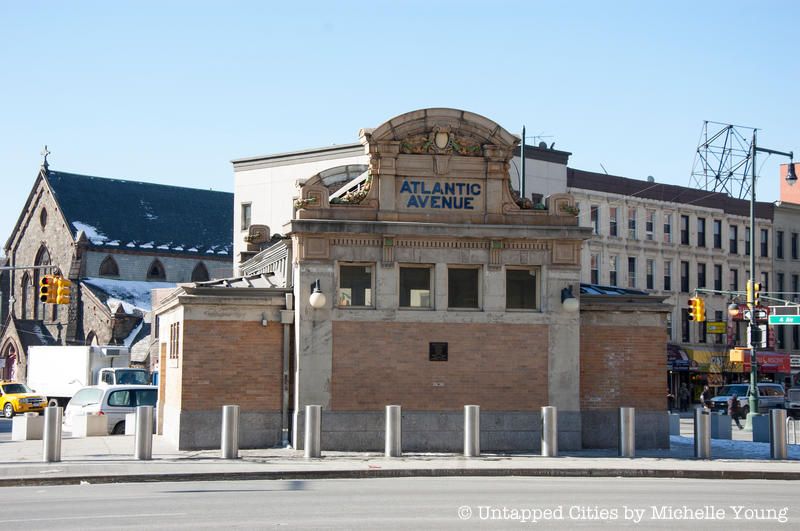
This fare control house has been listed on the National Register of Historic Places since 1980, though is not in use anymore. In fact, it hides an art installation that can be seen from inside the station.
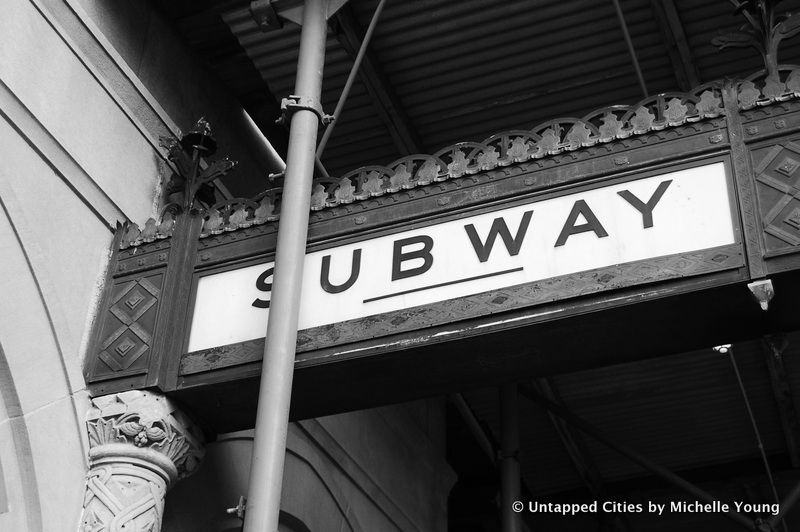
This stylized subway entrance sign comes off the facade of the Williamsburgh Savings Bank, one of the locations in Brooklyn that retains signs of when Williamsburg had an “h” at the end. The building, once the location for the Brooklyn Flea, has been converted into apartments and a venue hall.
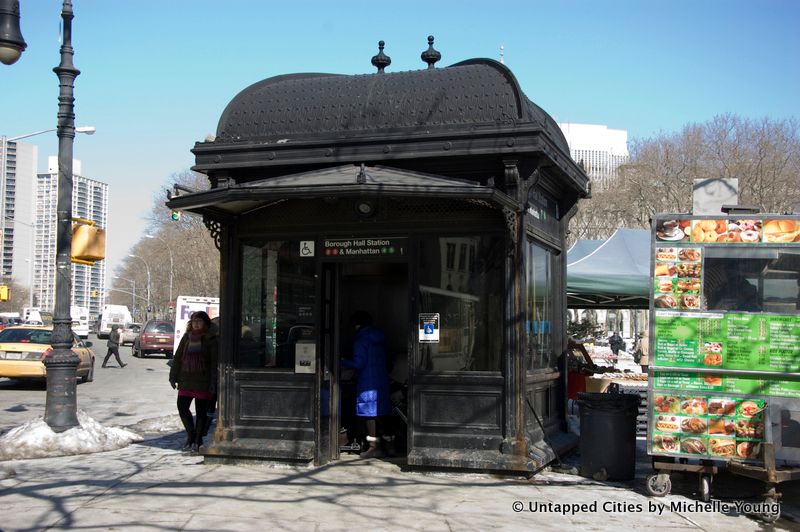
One of the unique vintage subway entrances in front of the landmarked Borough Hall in Brooklyn.
IN
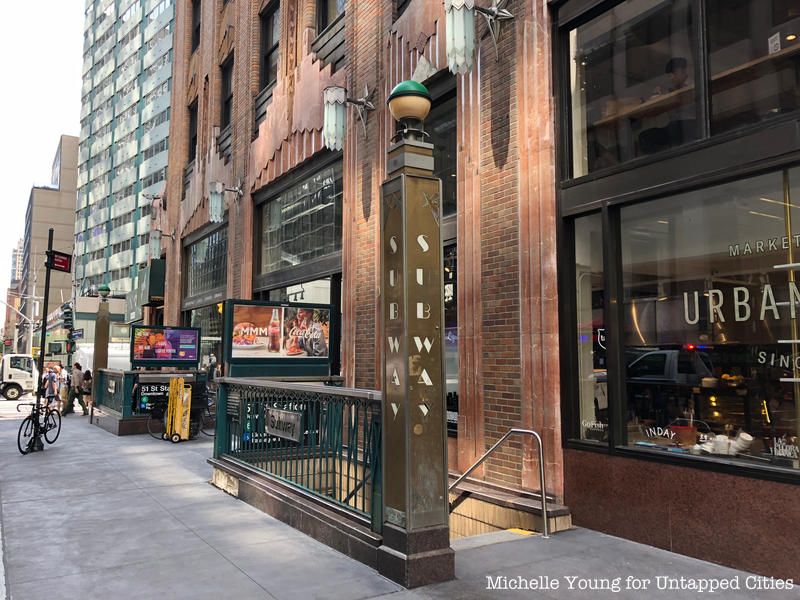
This Art Deco entrance at the 51st and Lexington Avenue stop looks like it was designed to match the GE Building (originally RCA building), which in turn was built to complement St. Bartholomew which is just west of it.
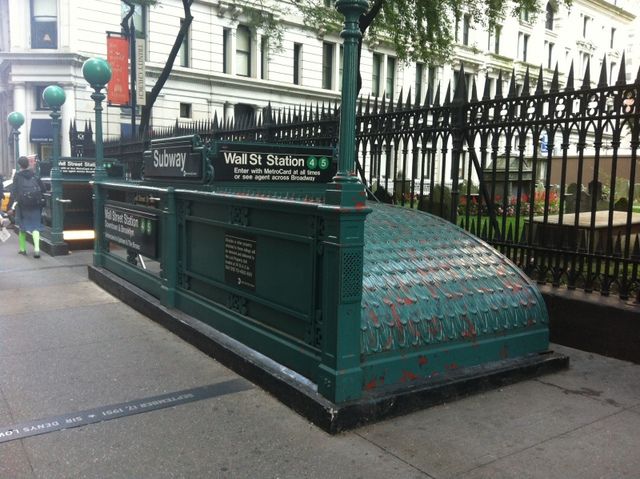
At Wall Street, the hatchbacked vintage subway entrance makes several appearances, matching ones also found at Court Street-Borough Hall in Brooklyn.

The Municipal Archives Building and this vaulted area were designed by some architectural powerhouses. McKim, Meade & White did the building while Gustavino did the tiling (he also did the tiling in the abandoned City Hall station and in Grand Central).

Photo by Patrick Cashin/MTA from Flickr.
This station at E. 180th Street/Bronx Park, conceived by the same architecture firm that helped design Grand Central Terminal, was built in 1912. The building used to serve as a headquarters for the old New York, Westchester and Boston Railway system. The MTA restored the station to its former glory in 2013 with a two-year $66.5 million renovation project. The building boasts a stucco, red terra cotta-tiled roof, two four story towers, and a courtyard.The building also houses employee facilities for Rapid Transit Operations, Signals and Structures. Visitors are greeted at the entrance by a plaque with the head of Mercury, the Roman god of transportation, which lives atop a vintage-inspired clock.
Next, check out 10 unique,not necessarily vintage, subway entrances in NYC.
There are plenty other vintage transit details, especially signage, if you look closely around you. If you spot any others, hashtag them with #untappedcities and they’ll appear in our Untapped Cities photo pool!
Subscribe to our newsletter